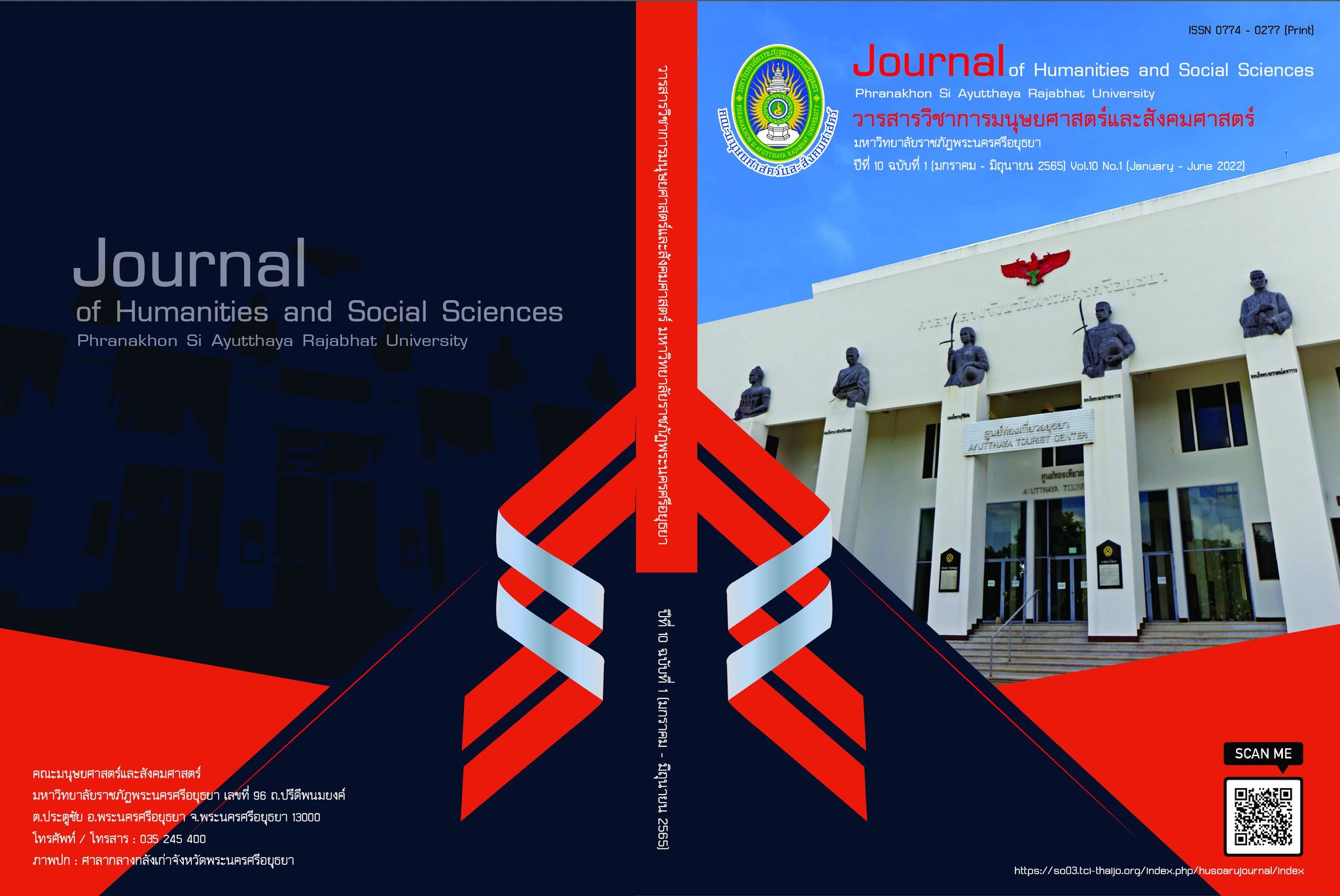Traditional Social Structure and Its Changes in Current Muong Societies in Hoa Binh Province, Vietnam
Main Article Content
บทคัดย่อ
This article examines the traditional social structure of the Muong and its influences on their society in the modern society of Muong people in Hoa Binh province, Vietnam. The author employs the methodology of Structuralism and Functionalism along with anthropological methods, observations, data collection, and in-depth interviews. The author points out that the Muong people still appreciated the role of religious dignitaries and the critical existence of the elder in their occupation despite the fact that their social structure has been officially eliminated since 1954. Nowadays, the local authority of Hoa Binh province is paying more attention to preserving the traditional values of shaman and stimulating the young Muong people to study their patois to protect positive cultural values through the role of Muong social classes in the context of modernization. Simultaneously, the author intends to propose some influential solutions to consult with the authority and local groups of Muong people in Hoa Binh province to implement appropriate policies of cultural preservation in Hoa Binh province effectively in the future.
Article Details

อนุญาตภายใต้เงื่อนไข Creative Commons Attribution-NonCommercial-NoDerivatives 4.0 International License.
บทความที่ได้รับการตีพิมพ์เป็นลิขสิทธิ์ของ คณะมนุษยศาสตร์และสังคมศาสตร์ มหาวิทยาลัยราชภัฏพระนครศรีอยุธยา
ทัศนะและความคิดเห็นที่ปรากฏในบทความในวารสารฯ ถือเป็นความรับผิดชอบของผู้เขียนบทความ และไม่ได้เป็นทัศนะและความรับผิดชอบของ กองบรรณาธิการ หรือ ของ มหาวิทยาลัยราชภัฏพระนครศรีอยุธยา
เอกสารอ้างอิง
Alan, J. (1979). The Social Theory of Claude Levi-Strauss. London: The MacMillan Press.
Chris, J. (1993). Cultural Reproduction. London: Routledge.
Cuisinier, J. (1985). Muong people: Humanity Geography and Social studies. Hanoi: Labor Publishing House.
Daniel , D. F. (2004). Elder Voices: Southeast Asian Families in the United States. Oxford: AltaMira Press.
Edward, S. (1970). The introduction to study of speech. New York: Hacourt Brace.
Ethnic minorities in Vietnam. (1978). Hanoi: Social Sciences Publishing House.
Firth, R. (1972). Methodological Issues in Economic Anthropology. Man, 467-475.
General Statistics Office. (2019). Completed results of the 2019 Vietnam population and housing census. Hanoi: Statistical Publishing House.
George , M. (1949). Social Structure. New York: The Macmillan Company.
Ha Kinh. (1983). A explored testimony under Hong Duc period in Da Bac (1471). Journal of Historical Research, Volume.1.
Hoa Binh People's Committee. (2016). No. 2295/QĐ-UBND on the approval of the Muong language’s letter in Hoa Binh province. Hoa Binh.
Hoa Binh People's Committee. (2018). No.3015/QĐ-UBND, Project "Preservation and enhancement in Mo Muong cultural heritage's values in the period of 2019-2025. Hoa Binh.
Hung, D. (2004). Characteristics of Muong ethnic in Hoa Binh and Tai people in Son La in making democratic regulations in local provinces. Hanoi: Culture and Information Publishing House.
Michael, B., & Henril, K. (2011). The Routledge Companion to Research In the Art. New York: Routledge: Taylor and Francis Group.
Steven , L. (1975). Political Rituals and Social Integration. the Journal of Sociology, 9(2), pp. 289-308.
Tu, T. (1996). Muong people in Hoa Binh province. Hanoi: Scientific Association of Vietnamese History.
Vong, B. H. (2014). Muong villages in Hoa Binh. Hanoi: Culture and Information Publishing House.
William, H. A. (1999). Cultural Anthropology. Fort Worth: Harcoury Brace College Publishers.


